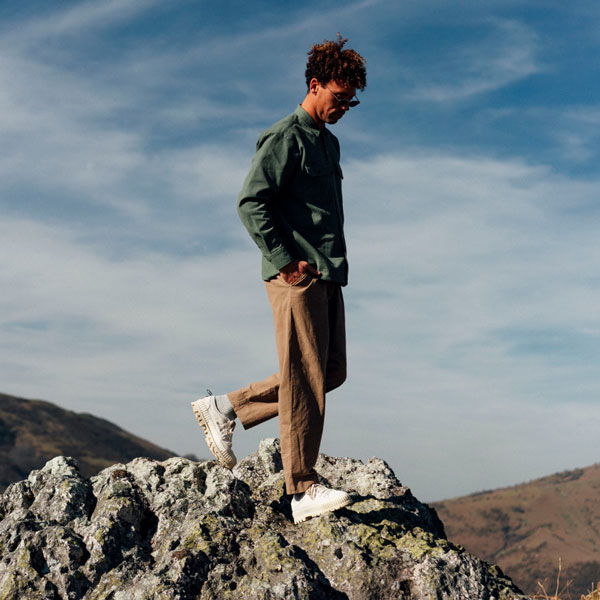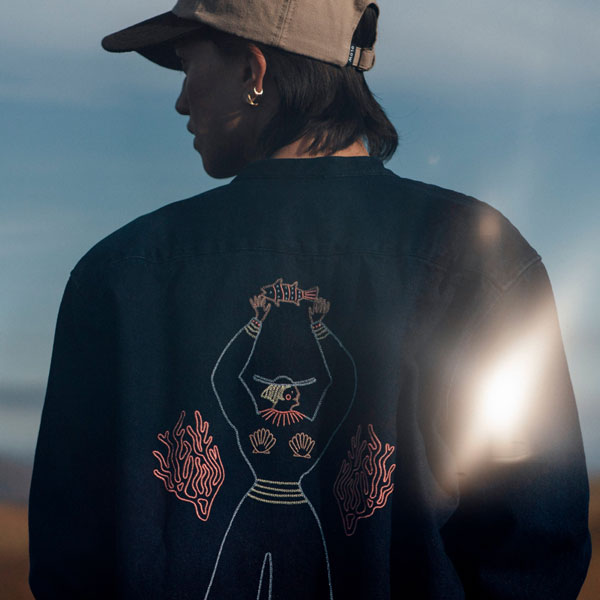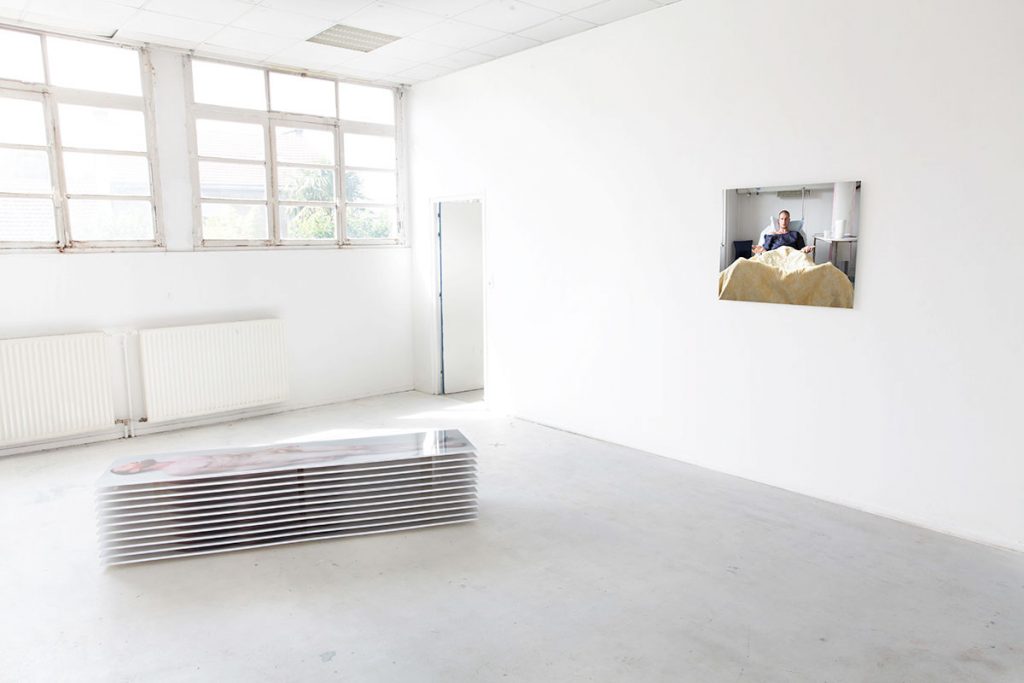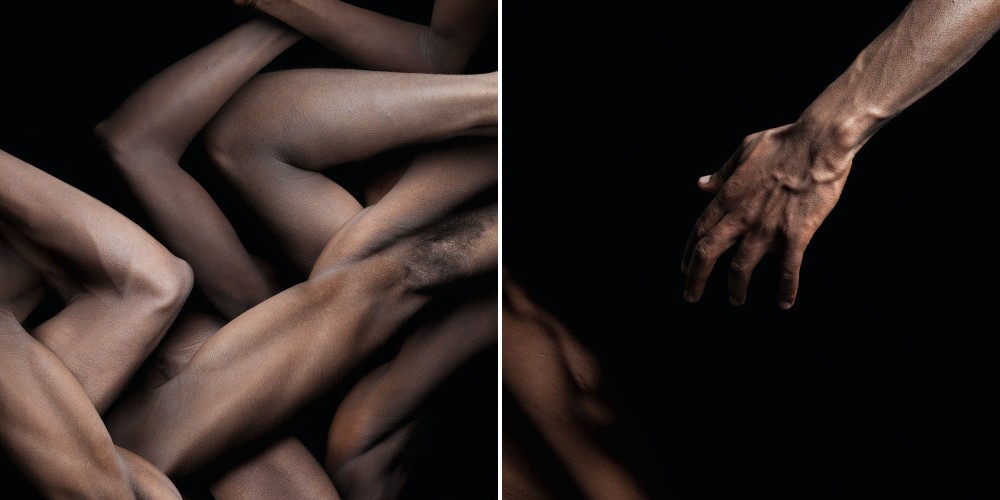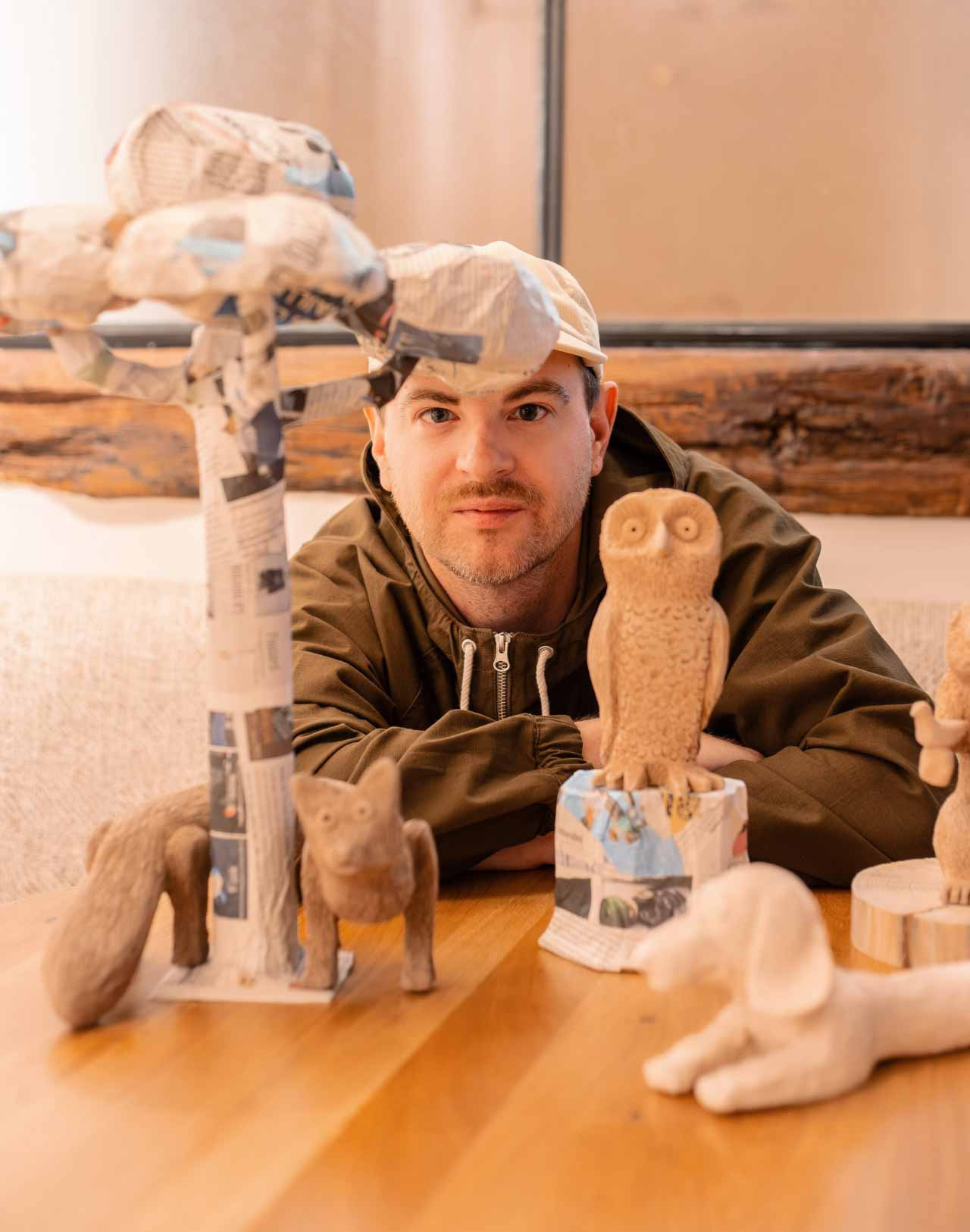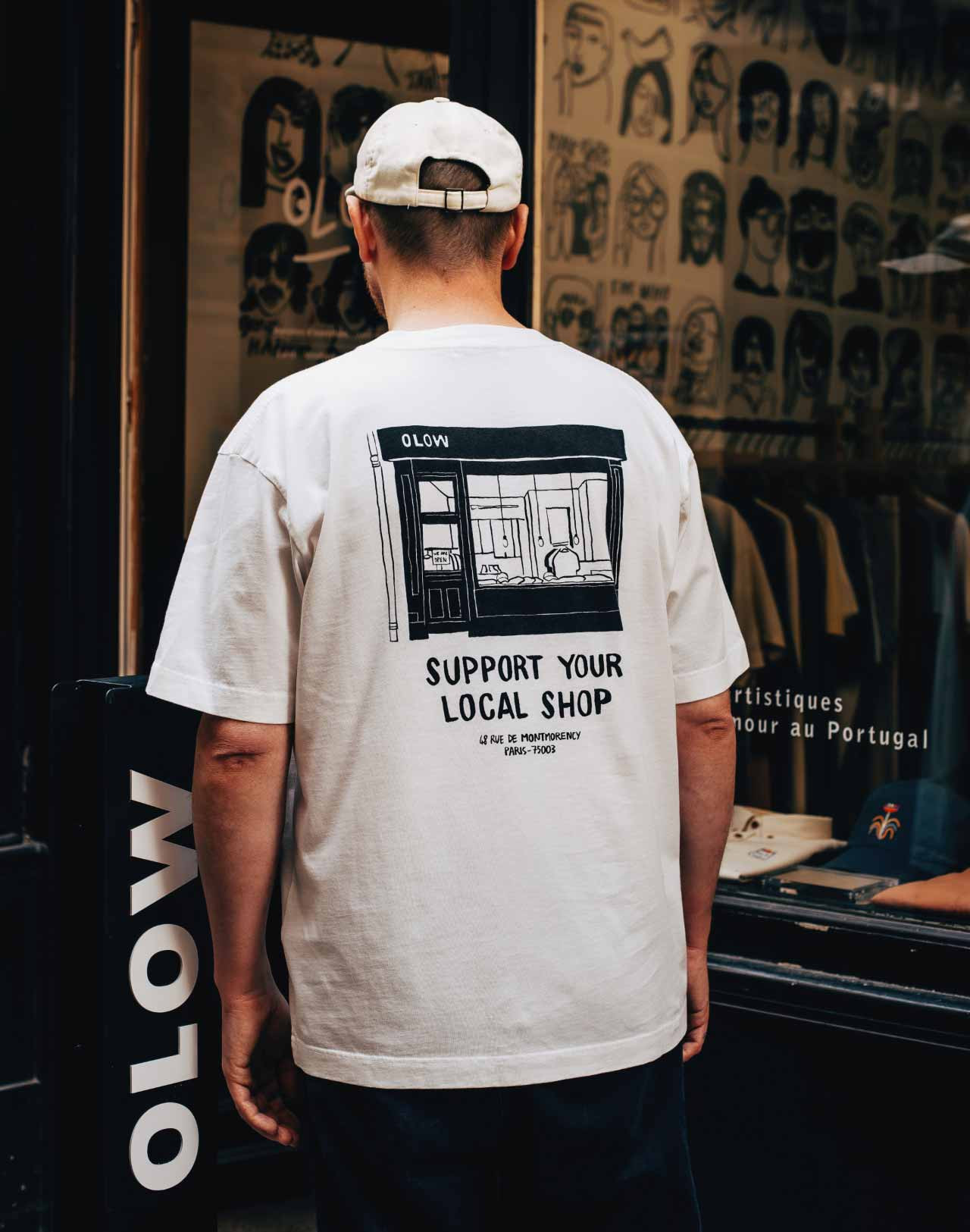Nicolas Blum-Ferracci, the digital photographer
Nicolas Blum-Ferracci has only just graduated from the Beaux-Arts in Nantes with the will to navigate through the flux of “post-Internet” images. A conceptual and complete artist, his aim is to decontextualize images he finds on the Internet by reinterpreting them and by making them interact in a brand new way with the public. He modelled for our 2015 Autumn-Winter collection, but it’s his idea-and-art-filled mind he lends us today…
Hi Nicolas! You’ve only just graduated from the Ecole Nationale des Beaux-Arts in Nantes. You originally wanted to study history. What made you change your mind?
Originally, I was at uni studying history in order to go to Sciences Po’ (Faculty of Political Science). When I got there, I realized I didn’t really know what I was getting myself into. I didn’t even sit the entrance exam. At that time, a childhood friend gave me a canvas and some paint. Another friend from uni worked at a communal studio. I began accompanying him and calling artists for advice. Little by little, everything became obvious. I decided to take-up my studies again, but I was 27 years old already! One of the Beaux-Arts jurors during my interview told me I had one of the worst portfolios he’d ever seen, but that he accepted me because I really wanted to go there. I like myself a lot more as an artist now than before.
Had you never thought of becoming an artist before?
I was a kind of repressed artist. I had never even considered the possibility of becoming one. I found my way by pure chance, by meeting people. I used to only doodle in a notebook when I was bored stiff during my stint in a restaurant. I didn’t know anything about drawing, or art, for that matter.
You were bedbound for a month due to spinal cord surgery in 2012. During that time, the inspiration to work with Internet as a medium came to you. What process did you go through to end up with this theme?
Being confined to your bed during 4 months in this contemporary era gives you time to read, of course, but also time to surf the Internet. It was my only activity and it made my think. It’s also that, the work of an artist: getting hold of an object, of a thought, of a place and translating it artistically. For 5 years, I explored a territory that matured with time. The “theme” just came about like that, over the years. I didn’t really choose to work with the Internet.
What do you think Internet brings to art, and to the relationship between the artist and the public?
There’s Internet, the source of information, and Internet, which places itself conceptually according to its own concerns. For example, seeing an image through a screen, or seeing in China or in France that same image at the same time. It’s its relationship with the world I’m interested in, and its immense database, which is used both as raw and derived matter.
For your “Série Noire” installation, a series of human bodies on a black backdrop, you began working with press images. What more does they have to say compared to other images?
I had been working with the body for nearly a year. We used to remake paintings with a mate, by removing their context. More personally, I used to take portraits of my close relatives in the style of famous paintings. I wanted to take that work further, and I had been compiling press photos for a long time. I started the “It’s Open” project by gathering loads of photos by searching the words “North Korea”. Press photos interested me because there was a documentary aspect to them that enabled me to paint a picture of the state of the world. I often found incredibly powerful contexts and recurrences in them. The human figure has often lived through spectacular experiences, like a dummy, or a media’s marionette that wants to show the world in a particular way. There’s always an editorial, even an ideological, question. AFP and Reuters are where I source most of my images.
How did you go from the initial press photos to the final product?
I wanted to take an interest in what the body is subjected to, whilst neutralizing everything else: the context and everything that referred to the original image. If you look at any kind of image, without a caption, you don’t really know what it’s about, where it was taken. You can say a picture is worth a thousand words, but in this case, I don’t think that’s enough to represent the whole world. The only information we have is the body at any given time. I picked a few images, then, where the figures reminded me of those in the history of art and worked on their own, out of context. I made my relatives act all this out. I then had fun with the framing and scale.
When we look at your images, we’re not too sure which photo depicts a footballer, or someone who was shot. They’re very powerful. Why choose to mix up sport and conflict?
Yes, it’s very interesting to talk about the footballer because his body could well have belonged to the person who was shot. Bodies in sport are nearly at the same level as those in conflict; they’re very spectacular and are subjected to a kind of torsion, a powerful emotion. They’re photographed for their movement.
By removing the bodies from their context, what new meaning are you trying to give them?
I find my project quite absurd, in fact. I didn’t try to make any sense of it because there is this total decontextualization. It’s always very polysemous; there’s this nonsense and the summoning of figures from the collective imagination.
A trip you took to Germany really inspired you and left its mark. Can you tell us how it impacted your work?
It was a “school” trip, where I was interested in extreme places. I obviously saw the incredible German museums, but also the concentration camps and the castles built by the Italians in true rococo style, with their absurd, jam-packed decor. We were going from a museum in Dachau to castles, and this abundance of references was quite interesting. I began learning how to look at paintings. I turned a corner over there.
Did the concentration camps, like the one at Auschwitz, aid your reflection on the body?
The thing that really hit me at Auschwitz was that the only real things left over there are the trees. There’s a denial of the body there; the denial of the Jewish bodies, of course, but also of bodies in general. It’s lifeless, as though there had never been any life. At the same time, I was seeing Flemish paintings and representations of Christ in museums. I found it interesting that these figures would appear to me in that context. I often call on that.
You were our model for our 2015 Fall-Winter collection. What was that experience like for you?
I had never modelled before. I was cornered in the street and found that really funny. I was curious, and as I liked OLOW’s clothes… I had already taken enough photos of myself to be at ease with the image I reflect on camera. It doesn’t bother me, I’ve gotten used to it.
In what way could fashion photography be interesting to work with, within the framework of your “Post-Internet” project?
It’s funny because, nowadays, I’m really interested in Instagram photos and self-documentation. All the genres of painting have been reworked: still life, self-portraits, landscapes; the whole history of art is found in this compulsive practice. I had the idea of doing a fashion photography project that would reintroduce cloths into a genre close to self-documentation, actually. I’d be bringing what I do into a fashion project rather than bringing fashion into an art project. I don’t think fashion photography is a very rich experience compared to our relationship with images.
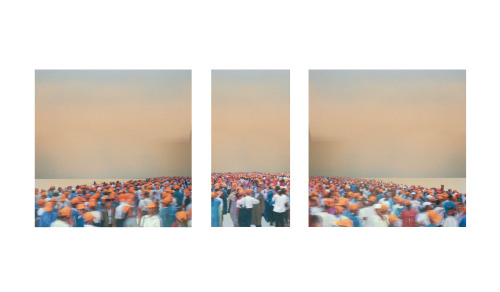
Your work has already been exhibited in Nantes many times, but also in South Korea. Can you tell us how that came to be?
It’s nearly as absurd as all the rest. Some Korean friends of mine were setting up an exhibition there and they suggested I send some of my pieces over. I had some saved-up money put away, so I decided to visit for a month and a half, and it was an incredibly rich experience. Every single journey brings something, to anybody, and particularly to artists. It has repercussions.
Where will we be able to see your next exhibition?
From December 10th, I’ll be at the Atelier Alain Lebras, rue Malherbe, near the castle in Nantes. There will be an opening, and it’ll last 10 days. I’m doing it as a duo with a painter friend of mine. It’s the second part of a cycle; the first one was called “On n’est pas là pour se faire engueuler” (We’re not here to be shouted at), and this one is obviously called “On est là pour voir le défilé” (We’re here to see the show), in reference to the Boris Vian song.
A big thank you to Nicolas for welcoming us into his home for this interview.
You can follow his work on his website and his Instagram.
Check out Nicolas modelling our clothes in our e-shop.
